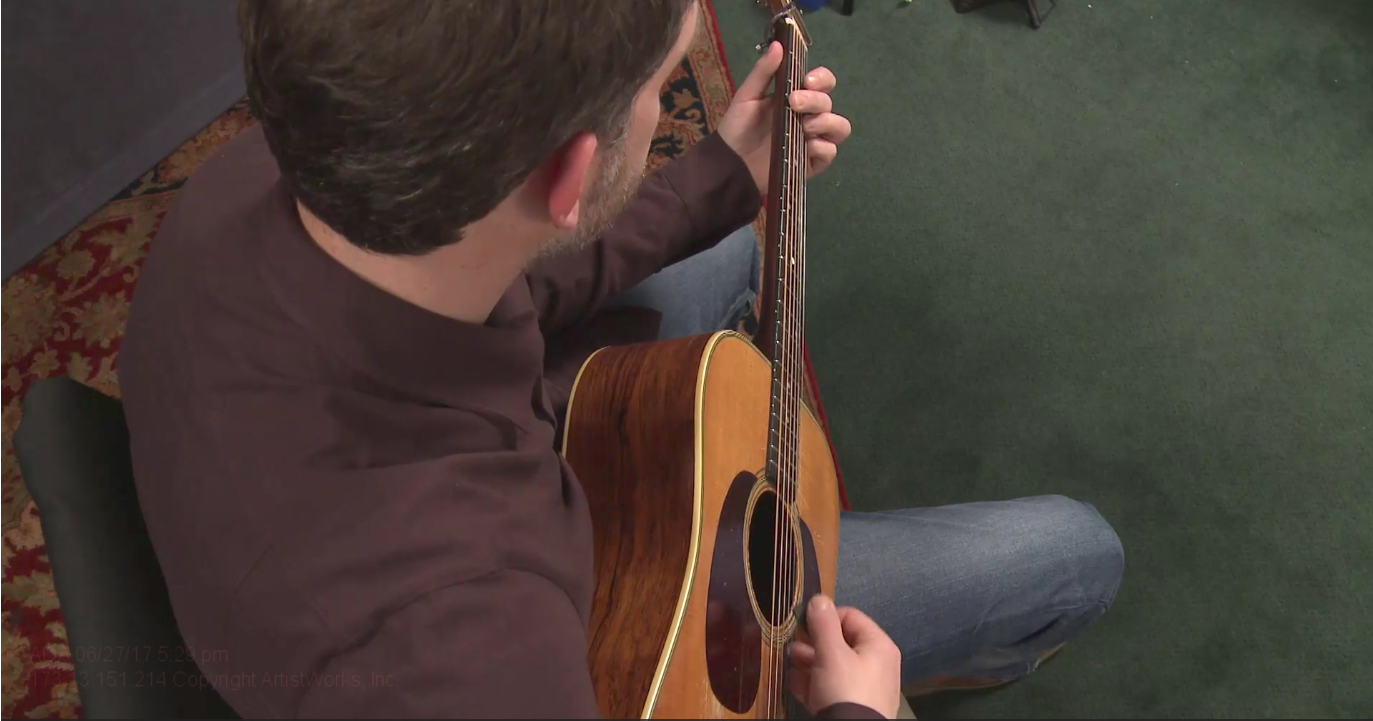Essential Bluegrass Guitar Licks: The G Run

One of the most popular licks in bluegrass music is the famous G-run. If you’ve ever listened carefully to a bluegrass jam session, you'll hear it all the time. Notice how each person or instrument plays the rhythm part until they eventually get a chance to shine by playing the lead.
The G-run is simply a handful of notes played by the guitarist to complete a phrase and, at the same time, signal the beginning of a new phrase.
Played over an open G chord, the run typically begins with the consecutive note in the major scale (A) and makes some sort of rhythmic pattern that eventually ends on the 3rd-string, the open G note. These notes of the G-run are often comprised of notes in the pentatonic scale.
However, some musicians have substituted other notes in the run to give it a different feel or characteristic. Del McCoury, for example, changes the E note in the scale to an F note, change creating a significant tonal difference.
It almost gives it a blues sound. As mentioned above, the most basic patterns typically begin on the open A note. From here, we would hammer-on to the 1st fret of the 5th string (A#) sliding quickly to the 2nd fret of the 5th string (B) before hitting the open D note on the 4th string.

This section can also be done using two hammer-ons and no slide. Once you pick the open D string, you can simply play up the pentatonic scale, ending on the 3rd string’s open G note.
A more advanced technique is to hammer-on to the 2nd fret (E) of the 4th string, pulling back off to the open D before finally picking the open G on the 3rd string, completing the phrase.
Del McCoury’s version as heard on "G Run Blues" would have you hammer-on to the 3rd fret of the 4h string playing the (F) note instead of an (E). These two phrases can be played using all the notes mentioned or pieces of the phrases can be used essentially making a shorter phrase if desired.
Using slides, hammer-ons, and pull-offs, as in the previous example, can really enhance the rhythmic response when playing the same scale and notes — these techniques can really help the G-run come alive.
When using slides, a common motion would be to slide into a note with the same note, an open string, above or below it.
This can be done in several places: sliding from the 4th to 5th fret on the 4th string slides you from notes F# to G. After picking the 5th fret (G), simply pick the open G string to create a 3-note pattern. This can also be done by picking the open string and the fretted note at the same time, more commonly referred to as a two-note unison.
Also, when playing around with the G-run, don’t be afraid to jump around and try these concepts in other keys. Its name doesn’t mean you can only play similar patterns in the key of G. So grab your guitar and get to “pickin’ and grinnin’!”

Love bluegrass guitar? Then be sure to check out Bryan Sutton's flatpicking lessons here at ArtistWorks. Click here for free sample lessons!
Related Blogs:







Comments